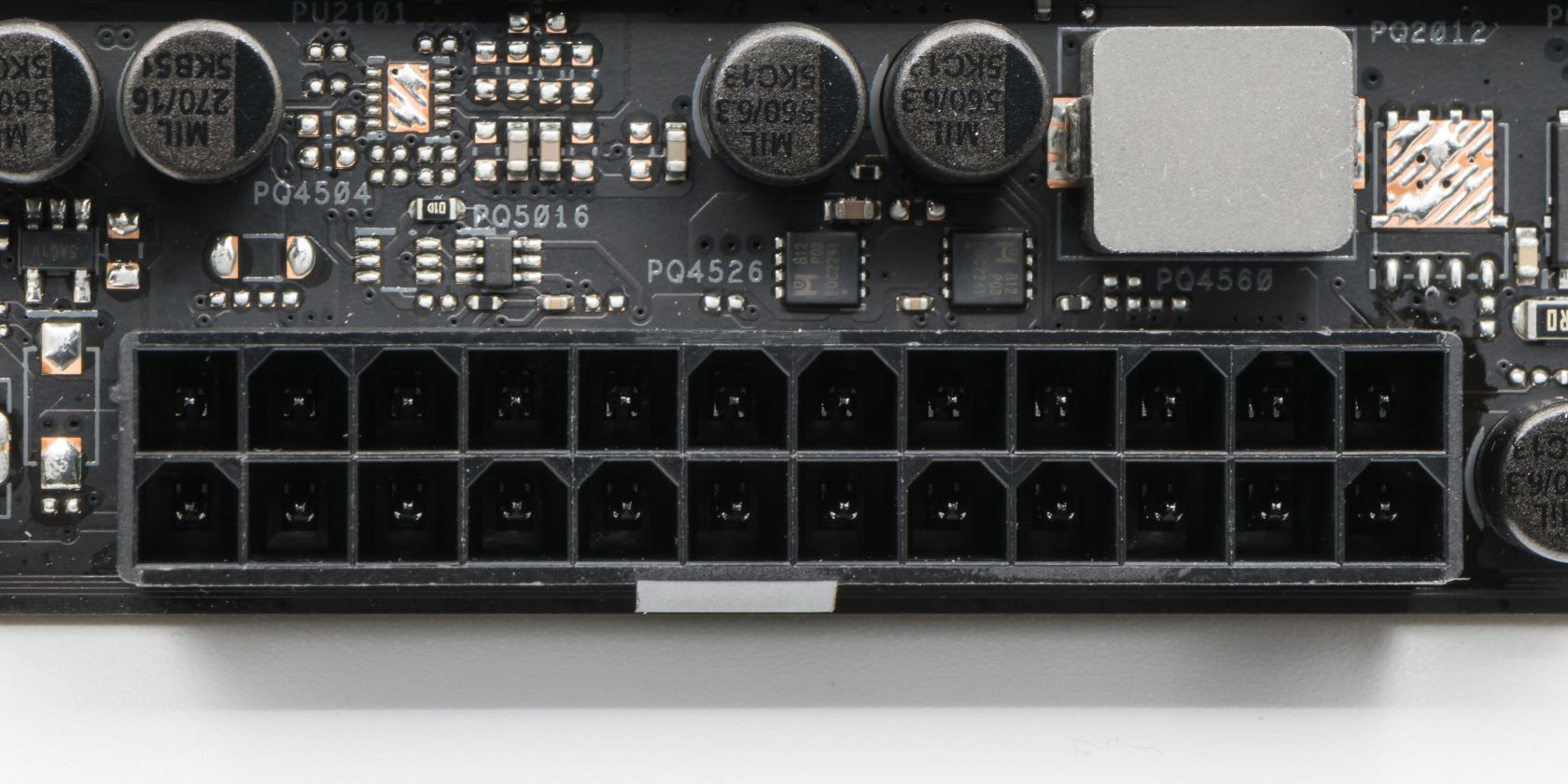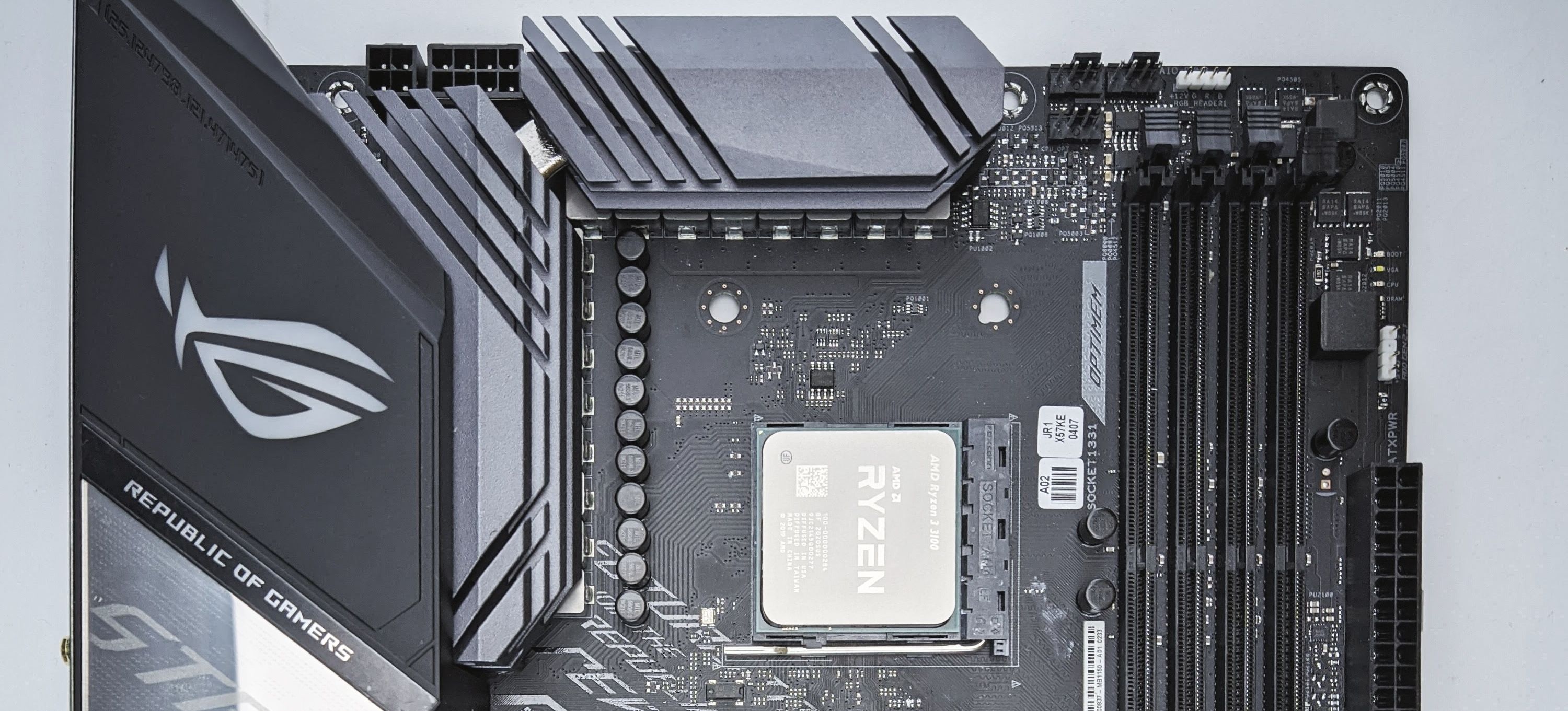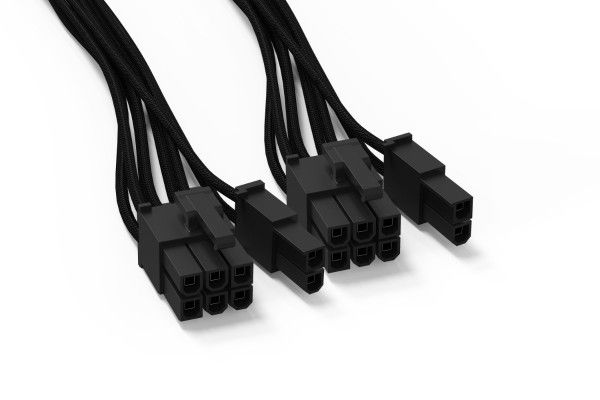If it's your first time building a desktop PC, seeing all the different connectors dangling off a PSU can be intimidating. You might ask yourself, "Why are there so many connectors? Why are they grouped like blocks? And which connectors do I need to power the motherboard and the CPU?"
Although it may seem complicated, once you familiarize yourself with all the standard power connectors in a PSU, you'll realize how simple and straightforward it is to use all those cables.
So, let's check out all the standard connectors, and then we'll explain the rationale behind each of them.
Understanding Standard PSU Power Connectors
A power supply unit (PSU) has several cables and power connectors. Each connector supplies different voltages for different components in a computer, meaning plugging in the wrong power connector to a component could fry your parts due to overvoltage.
Fortunately, this event is unlikely since the connectors are designed to only plug into specific ports in a motherboard and other PC components. However, you could unwittingly undervolt certain parts using lower voltage connectors for more power-hungry components.
To ensure you're using the correct power connector for each PC component, let's discuss all the standard connectors a PSU provides.
Here's a table that provides an overview of the most common PSU power connectors, including their names, function, and power specifications:
|
Connector |
Function |
Voltage(s) |
Wattage |
|---|---|---|---|
|
24-pin (20+4 pin) ATX main power |
Supplies power to the motherboard |
+3.3V, +5V, and +12V |
300W |
|
4-pin ATX 12V power |
Supplies power to the low-powered CPU |
+12V |
120W |
|
8-pin (4+4 pin) EPS12V |
Supplies Extra Power to the CPU |
+12V |
336W |
|
8-pin (6+2 pin) PCIe power |
Supplies power to graphics cards |
+12V |
150W |
|
SATA power connector |
Supplies power to SATA drives |
+5V, +12V |
54W |
|
Molex power connector |
Supplies power to older IDE drives |
+5V, +12V |
132W |
Why You Need Different Power Connectors and Cables
A computer is composed of several electronic components that require power, with each part needing different voltages to work correctly. So, you need a power supply to deliver all these different power requirements.
A PSU is specifically designed for desktop computers to supply appropriate voltages for each PC component, such as CPU, GPU, motherboard, and storage drives. It does so by providing several power connectors with varying numbers of pins which can sometimes be split to support different motherboards and CPUs.
Why Split EPS and ATX Power Connectors?
Modern PSUs often provide EPS and ATX power connectors that can be split. 8-pin EPS connectors can be divided into two 4-pin EPS, and a 24-pin ATX can be split into one 4-pin ATX and a 20-pin ATX power connector.
These power connectors provide more flexibility in power delivery and support for older legacy motherboards and CPUs.
In the past, a 4-pin ATX connector could power a CPU due to its relatively low power requirements, but as CPUs get faster, the more power it requires. Today, CPUs have become so fast that they need at least an 8-pin EPS power connector for stability. Some workstation CPUs will even require an additional 4-pin or 8-pin EPS connector when overclocked.
Since motherboards require more power today, PSUs now provide 20+4-pin power connectors for improved power delivery and stability while supporting older motherboards.
Which Power Connectors to Use for Your Motherboard and CPU
Based on the table earlier, spotting which connector should power which component within your PC should be easy. But depending on the motherboard and CPU, you may need to split, combine, or even add an extra power connector to provide the appropriate power to the component.
Several motherboard sizes are available in the market; for motherboards such as ATX, micro-ATX, and Mini-ITX motherboards, the complete 24-pin ATX power connector should be used.
EATX boards usually run stable with a 24-pin power connector, but dual CPU EATX motherboards may require an additional power connector. Compact motherboards, such as an ITX, typically require a 20-pin connector, but some models require a full-24-pin connector.
For most CPUs, an 8-pin EPS power connector should be enough to provide stable performance. However, high-end desktop processors such as Intel's Core i9-11900K may need an additional 4-pin or 8-pin power connector. Although the thermal design power (TDP) of a Core i9-11900K is around 125 watts, it can still draw significantly more power under heavy usage and even more when overclocked.
For older CPUs, such as a second-generation Intel Core processor, you may get away with a single 4-pin ATX12V power connector. However, if its compatible motherboard has an 8-pin CPU port, you should always use an 8-pin connector.
If you're still unsure which pin to use, it is always better to consult the official product manuals for your PC components.
Do You Need to Use Redundant Connectors?
Let's say that your motherboard has two 8-pin EPS ports, and you know that your CPU will only need a single 8-pin EPS power to run. Do you need to plug both 8-pin EPS connectors? Will populating both EPS ports deliver too much power for a low-wattage CPU?
Redundant power ports, such as another 8-pin EPS port, will only supply power when such power is needed. This means you can populate all the redundant power ports available on a motherboard without fearing overvoltage.
Some motherboards may even require both EPS ports to be powered to post. So, if your motherboard provides two 8-pin EPS power ports, you may want to look for a PSU that provides two 8-pin EPS power connectors.
Understanding Power Connectors Is Easy
A desktop PC has several electronic components with different power requirements. So, you need a PSU to deliver all the required voltages through various power connectors.
You'll need an 8-pin EPS connector for the CPU and a 20+4 or 24-pin ATX power connector for your motherboard. If your motherboard has a pair of 8-pin EPS power ports, you may need to populate both ports. To be sure, it is always best to check the product manual for the specific item.
And that's what you need to know about power connectors. With this knowledge, you could confidently learn how to build a desktop PC, ensuring you use all the suitable connectors for your new CPU.



